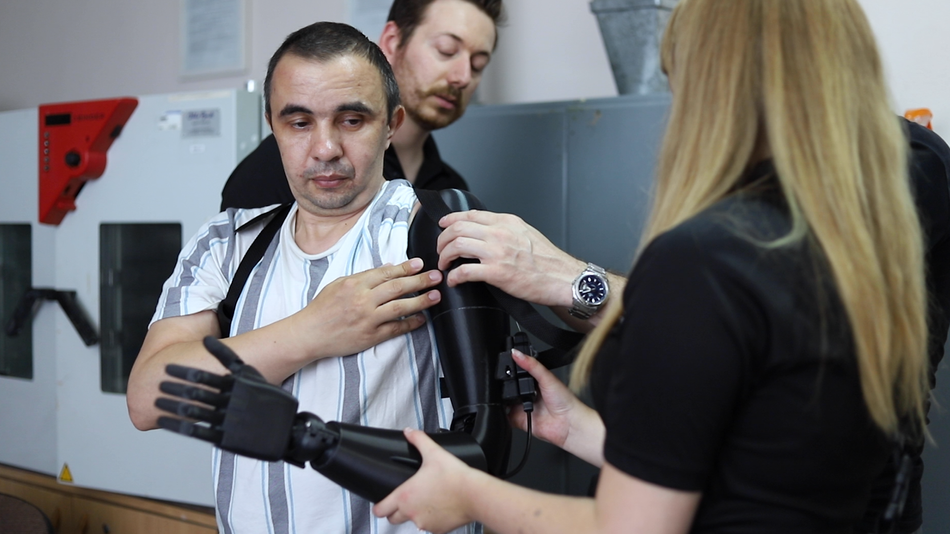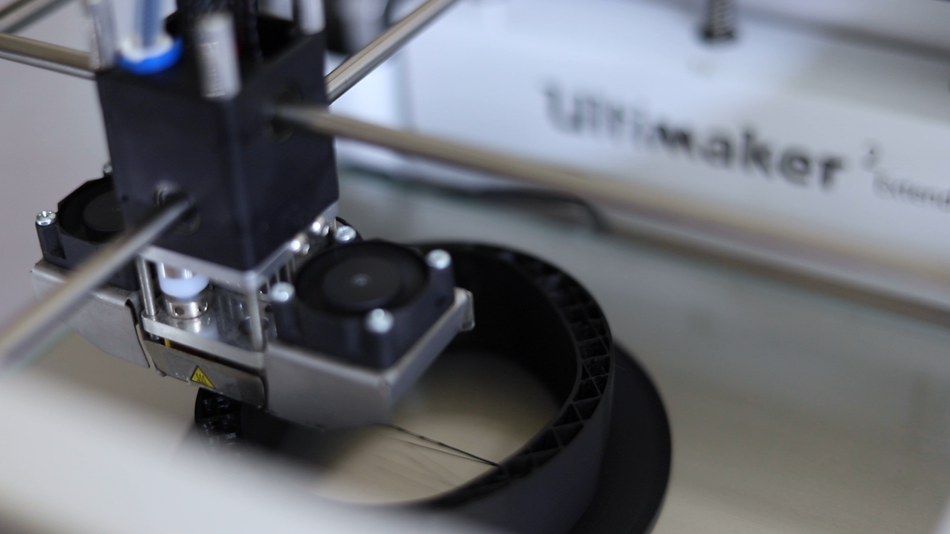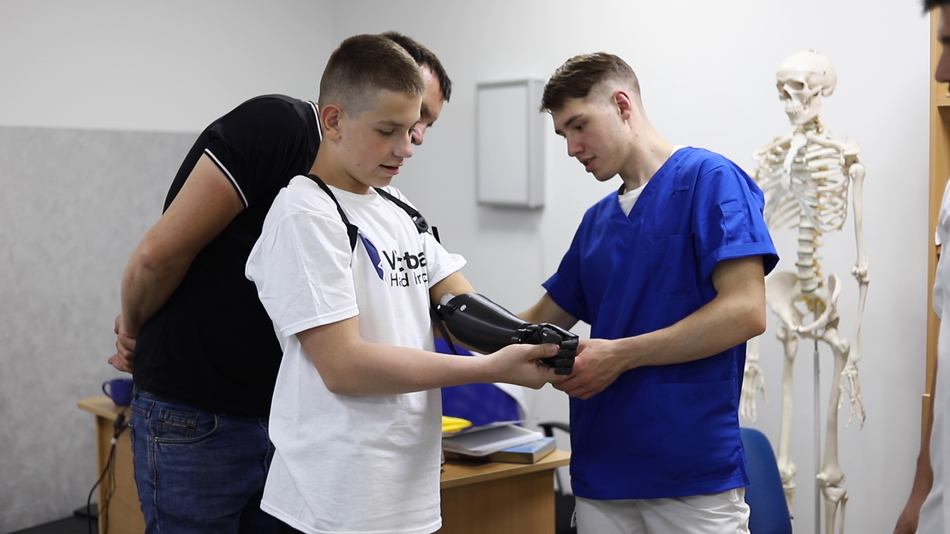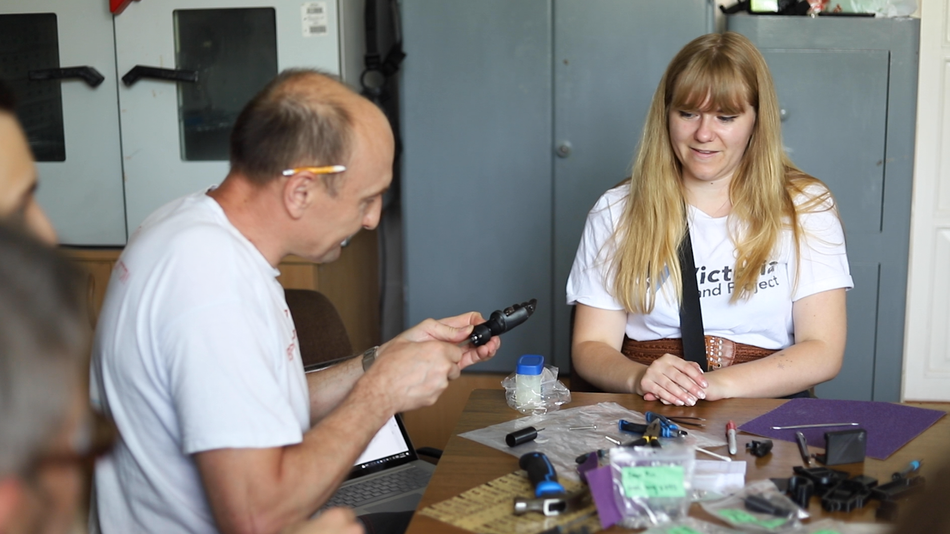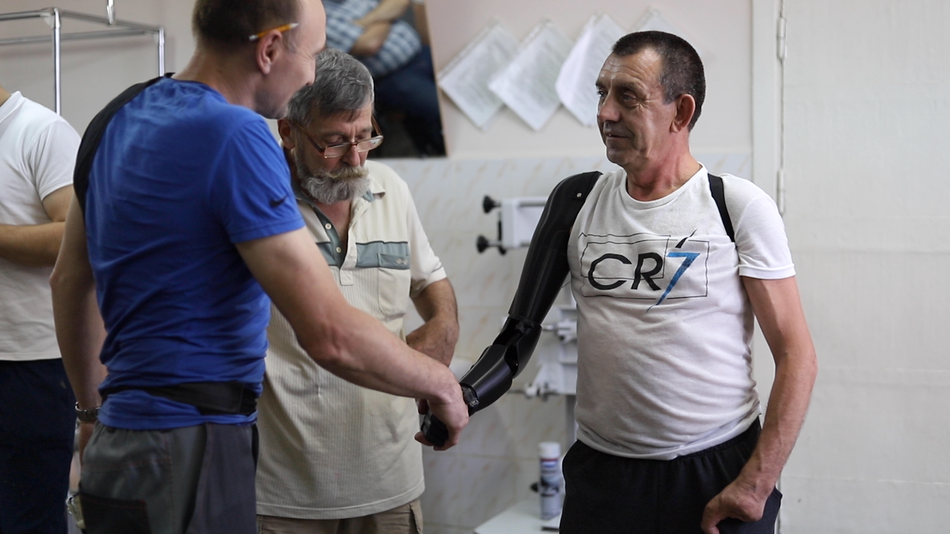Hands for Ukraine: The Victoria Hand Project's 3D Printing Initiative to Democratize Access to Prosthetic Care in Ukraine
In a world often defined by disparities in healthcare access, Victoria Hand Project, a Canadian charity, is a beacon of hope. Founded in 2015 with the mission to provide accessible 3D-printed prosthetic care to under-resourced communities around the world, Victoria Hand Project has transformed lives by combining cutting-edge technology with compassionate outreach.
This article was first published on
ultimaker.comIn a world often defined by disparities in healthcare access, Victoria Hand Project, a Canadian charity, is a beacon of hope. Founded in 2015 with the mission to provide accessible 3D-printed prosthetic care to under-resourced communities around the world, Victoria Hand Project has transformed lives by combining cutting-edge technology with compassionate outreach.
Victoria Hand Project began as a university research project and quickly evolved into a profound humanitarian initiative. Obstacles to prosthetic care access can arise from a variety of factors, such as financial constraints, lack of infrastructure, resource scarcity, or insufficient government support. Equipped with UltiMaker 3D printers, the team has brought this revolutionary technology to communities that have little to no access to prosthetic care. Since inception, Victoria Hand Project has partnered with clinics in 11 countries, with Ukraine being its most recent addition.
“3D printing is a very useful tool that can help with the current tools of prosthetics,” said Nick Dechev, Founder and CTO of Victoria Hand Project. “It’s great for certain applications, especially for sockets for upper limbs because they’re lightweight and they can be printed customizable for each person.”
Expanding the availability of prosthetic hands in Ukraine
The organization’s Hands for Ukraine initiative was in response to the urgent needs of those affected by conflict. In summer 2022, Victoria Hand Project initiated an expansion to Ukraine, laying the groundwork for sustainable prosthetic care in the region.
The organization’s approach to prosthetic care goes beyond the mere provision of devices. It offers various 3D printed prosthetic hands to meet the needs of the individual. Central to its approach is the customization of the prosthetic arm socket, which can be 3D printed directly on-site at the partner clinic. This not only reduces costs but also empowers local communities with the necessary skills and technology.
“Victoria Hand Project is uniquely placed, in which we bring these 3D printers and this training to the clinics we work with so that everything is produced in-house, in-country,” said Kelly Knights, COO at Victoria Hand Project. “For Ukraine, it’ll be Ukrainians making hands for Ukrainians in-country, on demand.”
Throughout its journey, Victoria Hand Project has maintained an unwavering trust in UltiMaker’s 3D printing technology. UltiMaker 3D printers, known for its reliability and quality, form the backbone of Victoria Hand Project’s operations. The decision to standardize the use of UltiMaker's printers has enabled streamlined production and consistent results across partner sites globally.
“We only use UltiMaker printers. We found that they worked in many different environments around the world, and they have great print quality,” said Michael Peirone, CEO of Victoria Hand Project. “Some of the partners we work with don’t have experience in 3D printing, and the printers are easy for them to use and maintain. Also, by standardizing the type of printer we’re using, we’re able to provide the print sets and instructions so our partners can hit the ground running on producing these prosthetic devices independently.” The organization has about 35 UltiMaker printers, spread across its lab and partner sites.
Victoria Hand Project’s choice of materials is also integral to the durability and comfort of the prosthetic hands. PLA is the primary material used, known for its ease of printing and suitability for prolonged skin contact. Since prosthetic hands are frequently used, it's important for their parts to be durable and strong to ensure that they can withstand impacts and be used repeatedly over a long period.
“We use BASF PRO1 material from Forward-AM, which we find works incredibly well. The quality is amazing, and the strength is very important for the prosthetic devices,” Peirone continued. “We were looking for strength, durability, and material quality. We did a lot of testing at our lab in Victoria on 3D-printed tensile samples or prosthetic hand components, and we found the Forward-AM material was exactly what we needed. Using the UltiMaker printers with the Forward-AM PRO1 materials, we’re able to produce these prosthetic devices that many clinicians around the world are very happy with.”
The Victoria Hand was one of the first prostheses to be 3D printed, according to Dechev. “There has been an incredible amount of design done on the prosthesis. There was a lot of learning, a lot of time spent working and speaking with amputees and getting professional opinions from prosthetists. All these people contributed to the design of the Victoria Hand.”
The Victoria Hand is a unique prosthetic device that operates using body-powered mechanisms like a conventional hook. The hand is designed to be easy to use and repair, waterproof, and user-friendly. Each recipient receives a customized prosthetic arm that is fitted to their body. This includes a custom 3D-printed limb socket for each recipient and a standardized hand.
The attachment process involves securing the prosthetic arm similar to wearing a backpack. By shrugging their shoulders, the hand’s cable is activated, enabling the hand to open and close. The Victoria Hand is a mix of 3D-printed and metallic components. It is designed to serve as a replacement limb for those experiencing limb loss, featuring articulated fingers and thumbs that enable various functions.
The Victoria Hand has two main components that are not 3D printed. The palm and fingers are printed from PLA materials, while the fingertips are crafted from silicone through a casting technique. Internal components comprise stainless steel, springs, bolts, and laser-cut steel parts for added strength.
Timeline from the initial consultation to the final fitting varies, ranging from an overnight completion if certain components are pre-prepared, to 2-3 days for a full construction (including the hand, wrist, socket, and all the components) and fitting process.
“Clinicians like the Victoria Hand for its user-friendly fitting process, functionality, and versatility,” said Dechev. “One device can help different people in different ways. Cost is also low, which allows clinicians to help people who cannot afford more expensive devices.”
A vision of growth
“We are seeing a growing influence of 3D printing on the landscape of prosthetics care,” said Knights. “When you’re working with individuals, it’s important to have custom limb socket fittings. 3D printing offers an avenue for producing intricate organic forms, which is essential to tailoring prosthetic devices to each person’s unique body but difficult to obtain through traditional manufacturing methods. We believe that 3D printing is poised to play an increasingly pivotal role, creating natural shapes and crafting sockets for enhanced comfort. As the reliability of this technology continues to advance, I’m confident we’ll see it extend into broader realms of development."
Looking ahead, Victoria Hand Project envisions a broader impact by creating a variety of prosthetic and orthotic devices. The organization's focus on upper extremity prosthetic care serves as a foundation for future innovations. The goal is to establish community-based print centers capable of producing an array of healthcare devices, bolstering local healthcare capacity.
The organization’s success story is one of determination, innovation, and compassion. As its reach continues to expand across continents, the team is committed to realizing their vision of accessible and affordable prosthetic care for all. With each 3D-printed prosthetic, Victoria Hand Project not only transforms a life but also demonstrates the potential of technology to bridge gaps and empower communities worldwide.
“We are grateful that we can benefit from these high-end technologies and be able to apply it to these use cases around the world,” Peirone continued. “We’re working with these clinics that have never used 3D printing before and now we’re teaching them how to produce high-end prosthetic devices that can be customized to each user. 3D printing can reduce the time to produce a prosthetic device, freeing up clinicians to help more people in their community and helping to build institutional capacity.”

